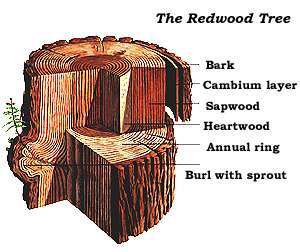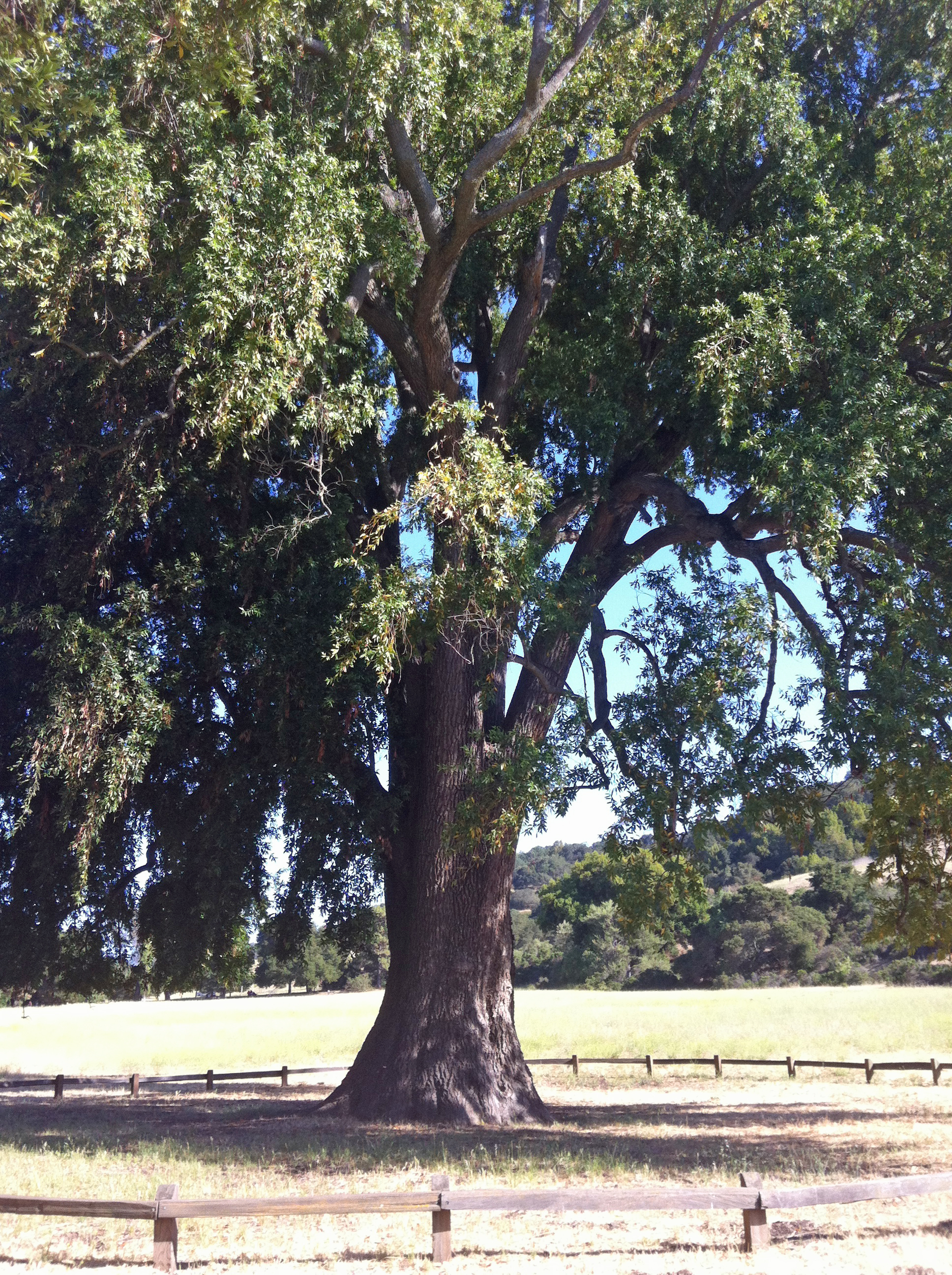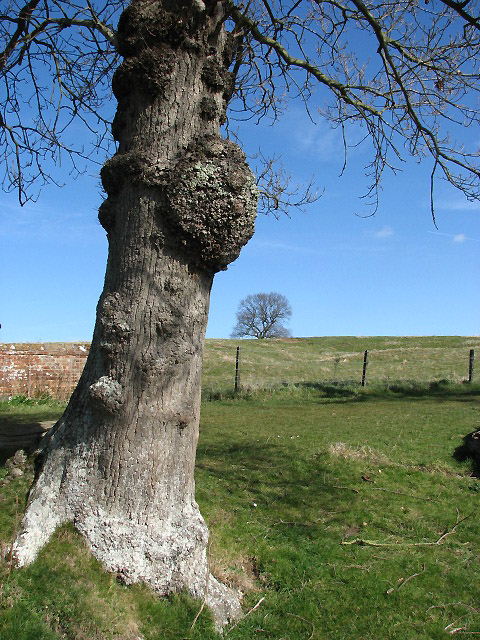|
Lignotuber
A lignotuber is a woody swelling of the root crown possessed by some plants as a protection against destruction of the plant stem, such as by fire. Other woody plants may develop basal burls as a similar survival strategy, often as a response to coppicing or other environmental stressors. However, lignotubers are specifically part of the normal course of development of the plants that possess them, and often develop early on in growth. The crown contains buds from which new stems may sprout, as well as stores of starch that can support a period of growth in the absence of photosynthesis. The term "lignotuber" was coined in 1924 by Australian botanist Leslie R. Kerr. Plants possessing lignotubers include many species in Australia; ''Eucalyptus marginata'' (jarrah), '' Eucalyptus brevifolia'' (snappy gum) and '' Eucalyptus ficifolia'' (scarlet gum) all of which can have lignotubers wide and deep, as well as most mallees (where it is also known as a mallee root) and many ''Ba ... [...More Info...] [...Related Items...] OR: [Wikipedia] [Google] [Baidu] |
Sequoia Sempervirens
''Sequoia sempervirens'' ()''Sunset Western Garden Book,'' 1995: 606–607 is the sole living species of the genus ''Sequoia (genus), Sequoia'' in the cypress family Cupressaceae (formerly treated in Taxodiaceae). Common names include coast redwood, coastal redwood and California redwood. It is an evergreen, long-lived, monoecious tree living 1,200–2,200 years or more. This species includes the List of tallest trees, tallest living trees on Earth, reaching up to in height (without the roots) and up to in diameter at breast height. These trees are also among the List of oldest trees, longest-living trees on Earth. Before commercial logging and clearing began by the 1850s, this massive tree occurred Native species, naturally in an estimated along much of coastal California (excluding southern California where rainfall is not sufficient) and the southwestern corner of coastal Oregon within the United States. Being the tallest tree species, with a small range and an extremely ... [...More Info...] [...Related Items...] OR: [Wikipedia] [Google] [Baidu] |
Umbellularia
''Umbellularia californica'' is a large hardwood tree native to coastal forests and the Sierra foothills of California, and to coastal forests extending into Oregon. It is the sole species in the genus ''Umbellularia''. The tree's pungent leaves have a similar flavor to bay leaves, though stronger, and it may be mistaken for bay laurel. The tree is endemic to the California Floristic Province. It is a host of the pathogen that causes sudden oak death. The dry wood has a color range from blonde (like maple) to brown (like walnut). It is considered an excellent tonewood and is sought after by luthiers and woodworkers. Description It is an evergreen tree growing to tall with a trunk up to in diameter. The largest recorded tree is in Mendocino County, California, and measured (as of 1997) in height with a spread. The thin bark is smooth and gray-brown when young, later turning reddish brown and scaly. The fragrant leaves are smooth-edged and lance-shaped, long and around a t ... [...More Info...] [...Related Items...] OR: [Wikipedia] [Google] [Baidu] |
Burl
A burl (American English) or burr (British English) is a tree growth in which the grain has grown in a deformed manner. It is commonly found in the form of a rounded outgrowth on a tree trunk or branch that is filled with small knots from dormant buds. Burl formation is typically a result of some form of stress such as an injury or a viral or fungal infection. More scientifically, a burl is “the result of hyperplasia, a greatly abnormal proliferation of xylem production by the vascular cambium”. Burls yield a very peculiar and highly figured wood sought after in woodworking, and some items may reach high prices on the wood market. Poaching of burl specimens and damaging the trees in the process poses a problem in some areas. Description A burl results from a tree undergoing some form of stress. It may be caused by a virus, fungus or ''Agrobacterium tumefaciens'' entering the plant through an injury. Most burls grow beneath the ground, attached to the roots as a type ... [...More Info...] [...Related Items...] OR: [Wikipedia] [Google] [Baidu] |
Coppicing
Coppicing is the traditional method in woodland management of cutting down a tree to a tree stump, stump, which in many species encourages new Shoot (botany), shoots to grow from the stump or roots, thus ultimately regrowing the tree. A forest or grove that has been subject to coppicing is called a copse or coppice, in which young tree stems are repeatedly cut down to near ground level. The resulting living stumps are called Living stump, stools. New growth emerges, and after a number of years, the coppiced trees are harvested, and the cycle begins anew. Pollarding is a similar process carried out at a higher level on the tree in order to prevent grazing animals from eating new shoots. ''Daisugi'' (台杉, where ''sugi'' refers to Japanese cedar) is a similar Japanese technique. Many silviculture practices involve cutting and regrowth; coppicing has been of significance in many parts of lowland temperate Europe. The widespread and long-term practice of coppicing as a landscape ... [...More Info...] [...Related Items...] OR: [Wikipedia] [Google] [Baidu] |
Quercus
An oak is a hardwood tree or shrub in the genus ''Quercus'' of the beech family. They have spirally arranged leaves, often with lobed edges, and a nut called an acorn, borne within a cup. The genus is widely distributed in the Northern Hemisphere; it includes some 500 species, both deciduous and evergreen. Fossil oaks date back to the Middle Eocene. Molecular phylogeny shows that the genus is divided into Old World and New World clades, but many oak species hybridise freely, making the genus's history difficult to resolve. Ecologically, oaks are keystone species in habitats from Mediterranean semi-desert to subtropical rainforest. They live in association with many kinds of fungi including truffles. Oaks support more than 950 species of caterpillar, many kinds of gall wasp which form distinctive galls (roundish woody lumps such as the oak apple), and a large number of pests and diseases. Oak leaves and acorns contain enough tannin to be toxic to cattle, but pigs are ab ... [...More Info...] [...Related Items...] OR: [Wikipedia] [Google] [Baidu] |
Manzanita
Manzanita is a common name for many species of the genus '' Arctostaphylos''. They are evergreen shrubs or small trees present in the chaparral biome of western North America, where they occur from Southern British Columbia and Washington to Oregon, California, Utah, Arizona, New Mexico, and Texas in the United States, and throughout Mexico. Manzanitas can live in places with poor soil and little water. They are characterized by smooth orange or red bark and stiff, twisting branches. There are 107 species and subspecies of manzanita, 95 of which are found in the Mediterranean climate and colder mountainous regions of California, ranging from ground-hugging coastal and mountain species to small trees up to 20 feet (6m) tall. Manzanitas bloom from winter to early spring and carry berries in spring and summer. The berries and flowers of most species are edible. The word ''manzanita'' is the Spanish diminutive of ''manzana'' meaning "little apple". The name manzanita is also somet ... [...More Info...] [...Related Items...] OR: [Wikipedia] [Google] [Baidu] |
Ceanothus
''Ceanothus'' is a genus of about 50–60 species of nitrogen-fixing shrubs and small trees in the buckthorn family (Rhamnaceae). Common names for members of this genus are buckbrush, California lilac, soap bush, or just ceanothus. ''"Ceanothus"'' comes from (''keánōthos''), which was applied by Theophrastus (371–287 BC) to an Old World plant believed to be '' Cirsium arvense''. The genus is native to North America with the highest diversity on the western coast. Some species (e.g., '' C. americanus'') are restricted to the eastern United States and southeast Canada, and others (e.g., '' C. caeruleus'') extend as far south as Guatemala. Most are shrubs tall, but '' C. arboreus'' and '' C. thyrsiflorus'', both native to California, can be small multi-trunked trees up to tall. Taxonomy There are two subgenera within this genus: ''Ceanothus'' and ''Cerastes''. The former clade is less drought-resistant, having bigger leaves. The evolution of these two clades likely started w ... [...More Info...] [...Related Items...] OR: [Wikipedia] [Google] [Baidu] |
Cotyledon
A cotyledon ( ; ; "a cavity, small cup, any cup-shaped hollow", gen. (), ) is a "seed leaf" – a significant part of the embryo within the seed of a plant – and is formally defined as "the embryonic leaf in seed-bearing plants, one or more of which are the first to appear from a germinating seed." Botanists use the number of cotyledons present as one characteristic to classify the flowering plants (angiosperms): species with one cotyledon are called monocotyledonous ("monocots"); plants with two embryonic leaves are termed dicotyledonous ("dicots"). Many orchids with minute seeds have no identifiable cotyledon, and are regarded as acotyledons. The Dodders (''Cuscuta'' spp) also lack cotyledons, as does the African tree '' Mammea africana'' ( Calophyllaceae). In the case of dicot seedlings whose cotyledons are photosynthetic, the cotyledons are functionally similar to leaves. However, true leaves and cotyledons are developmentally distinct. Cotyledons form during embryo ... [...More Info...] [...Related Items...] OR: [Wikipedia] [Google] [Baidu] |
Cussonia Paniculata - Lignotuber
''Cussonia'' is a genus of plants of the family Araliaceae, which is native to the Afrotropics. It originated in Africa and has its center of distribution in South Africa and the Mascarene Islands. Due to their striking habit, they are a conspicuous and easily recognizable group of plants. Their genus name commemorates the botanist Pierre Cusson. The Afro-Malagasy and Asian ''Schefflera'', and Afrotropical '' Seemannaralia'' genera are related taxa that share several of its morphological characteristics, among which the leaves borne on the end of branches, inflorescences carried on terminal branches or stems, and reduced leaf complexity in developing inflorescences. Range and habitat They occur in grasslands, woodlands and forests, from sea level to over 2,000 metres in altitude. Geographically, they are indigenous to sub-Saharan Africa, Yemen in the Arabian Peninsula and the Comoro Islands. Habit and morphology They are squat to lanky shrubs and trees with a palm-like habit. ... [...More Info...] [...Related Items...] OR: [Wikipedia] [Google] [Baidu] |






